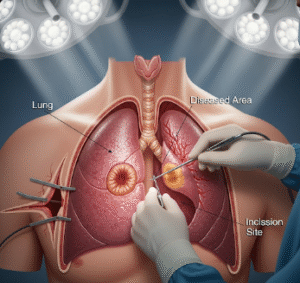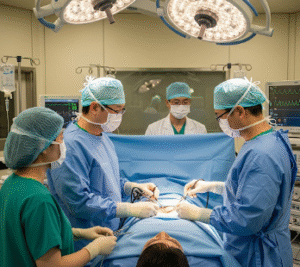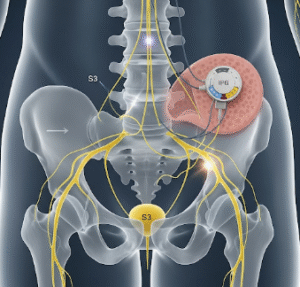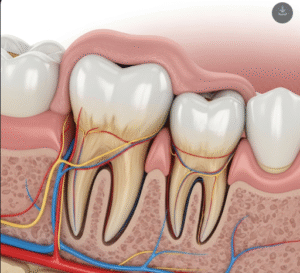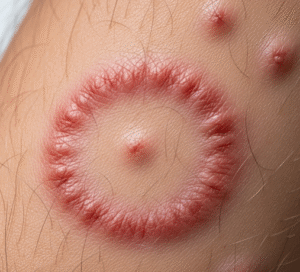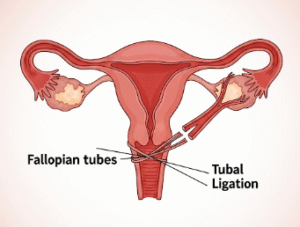Overview
Orthopnea is a medical symptom characterized by difficulty breathing when lying flat, often relieved by sitting or standing upright. It is commonly associated with heart and lung conditions, particularly heart failure. Orthopnea can significantly affect sleep quality, daily activities, and overall quality of life.
In Korea, patients with orthopnea are evaluated by cardiologists and pulmonologists, who perform comprehensive assessments to identify the underlying cause and provide treatment to improve breathing and manage associated conditions.
Key Facts
➤ Orthopnea refers to shortness of breath when lying down, typically improving when upright.
➤ Often a symptom of heart failure, but can also occur with lung disease or obesity.
➤ May develop gradually or suddenly, depending on the underlying condition.
➤ Can cause sleep disturbances, fatigue, and nocturnal awakening.
➤ In Korea, timely evaluation ensures appropriate management of cardiac and pulmonary health.
What is Orthopnea?
Orthopnea occurs when fluid accumulates in the lungs (pulmonary congestion) while lying flat, leading to difficulty breathing.
➔ Key points:
- Heart failure is the most common cause due to increased venous return to the heart when lying down.
- Can also be caused by lung diseases such as chronic obstructive pulmonary disease (COPD), asthma, or obesity-related hypoventilation.
- Severity is often graded by the number of pillows needed to sleep comfortably (e.g., “two-pillow orthopnea”).
Symptoms Related to Orthopnea
➤ Shortness of breath when lying flat.
➤ Needing multiple pillows or sleeping in a recliner.
➤ Nocturnal coughing or wheezing, sometimes with frothy sputum.
➤ Rapid heartbeat or palpitations when lying down.
➤ Fatigue and poor sleep quality due to frequent awakenings.
➤ Associated swelling in legs or ankles in heart-related causes.
Causes / Possible Causes
Cardiac Causes
➤ Left-sided heart failure – most common cause.
➤ Valvular heart disease – mitral stenosis or regurgitation increasing pulmonary congestion.
➤ Cardiomyopathy – weakened heart muscle affecting blood flow.
Pulmonary Causes
➤ Chronic obstructive pulmonary disease (COPD) – lung hyperinflation affecting breathing.
➤ Asthma – nighttime or positional exacerbation.
➤ Pulmonary edema – fluid in the lungs from various causes.
Other Causes
➤ Obesity or obesity hypoventilation syndrome – reduces lung expansion while lying flat.
➤ Diaphragmatic paralysis or neuromuscular disorders – impairs normal breathing.
➤ Severe anemia or hypoxia – exacerbating shortness of breath.
Risk Factors
➤ Existing heart disease – heart failure, valve disease, or cardiomyopathy.
➤ Chronic lung conditions – COPD, asthma, or pulmonary fibrosis.
➤ Obesity – particularly with sleep-related breathing disorders.
➤ High blood pressure or diabetes – increasing risk of heart complications.
➤ Older age – age-related changes in cardiac and pulmonary function.
Complications
Untreated orthopnea can lead to:
➤ Sleep disruption and chronic fatigue.
➤ Worsening heart failure or pulmonary disease.
➤ Pulmonary edema, potentially life-threatening.
➤ Decreased quality of life due to restricted mobility and discomfort.
➤ Increased risk of hospitalizations for underlying cardiac or respiratory conditions.
When Should I See My Doctor?
Seek prompt medical attention if:
➤ Orthopnea develops suddenly or worsens.
➤ Associated with chest pain, palpitations, or fainting.
➤ There is severe leg swelling or rapid weight gain.
➤ You experience nocturnal coughing or pink frothy sputum.
➤ Existing heart or lung disease shows worsening symptoms.
Care and Treatment
Lifestyle and Home Measures
➤ Elevate the head of the bed or sleep in a recliner.
➤ Limit salt intake to reduce fluid retention in heart failure.
➤ Maintain healthy weight and manage comorbidities.
➤ Monitor fluid intake as advised by a doctor.
➤ Practice breathing exercises to improve lung capacity.
Medical Treatments
➤ Diuretics – to reduce fluid overload in heart failure.
➤ Heart failure medications – ACE inhibitors, beta-blockers, or aldosterone antagonists.
➤ Treatment of underlying lung conditions – bronchodilators, inhaled steroids, or oxygen therapy.
➤ Surgery or device therapy – for severe valvular disease or advanced heart failure.
Preventive Measures
➤ Regular cardiac and pulmonary check-ups.
➤ Early treatment of infections that can exacerbate heart or lung conditions.
➤ Lifestyle modifications – exercise, smoking cessation, and healthy diet.
➤ Vaccinations – influenza and pneumonia vaccines to prevent respiratory complications.
Treatment Options in Korea
Korean hospitals provide comprehensive management for orthopnea, including:
Diagnostic Services
➤ Echocardiography – to assess heart function and detect heart failure.
➤ Chest X-ray and CT scans – to detect pulmonary edema or lung disease.
➤ Pulmonary function tests – to evaluate lung capacity and airflow.
➤ Blood tests – to check for anemia, kidney function, and electrolyte imbalances.
Therapies and Supportive Care
➤ Medications – diuretics, heart failure therapies, and bronchodilators.
➤ Non-invasive ventilation – CPAP or BiPAP for sleep-related breathing disorders.
➤ Lifestyle counseling – diet, exercise, and fluid management.
➤ Advanced interventions – valve repair, heart transplantation, or device therapy in severe cases.
➤ Multidisciplinary care – cardiologists, pulmonologists, nutritionists, and physiotherapists.
✅ In summary: Orthopnea, or difficulty breathing while lying down, is often a warning sign of heart or lung disease. Causes include heart failure, lung disease, obesity, or neuromuscular disorders. In Korea, early detection, medical therapy, and lifestyle interventions help manage symptoms, prevent complications, and improve quality of life.


